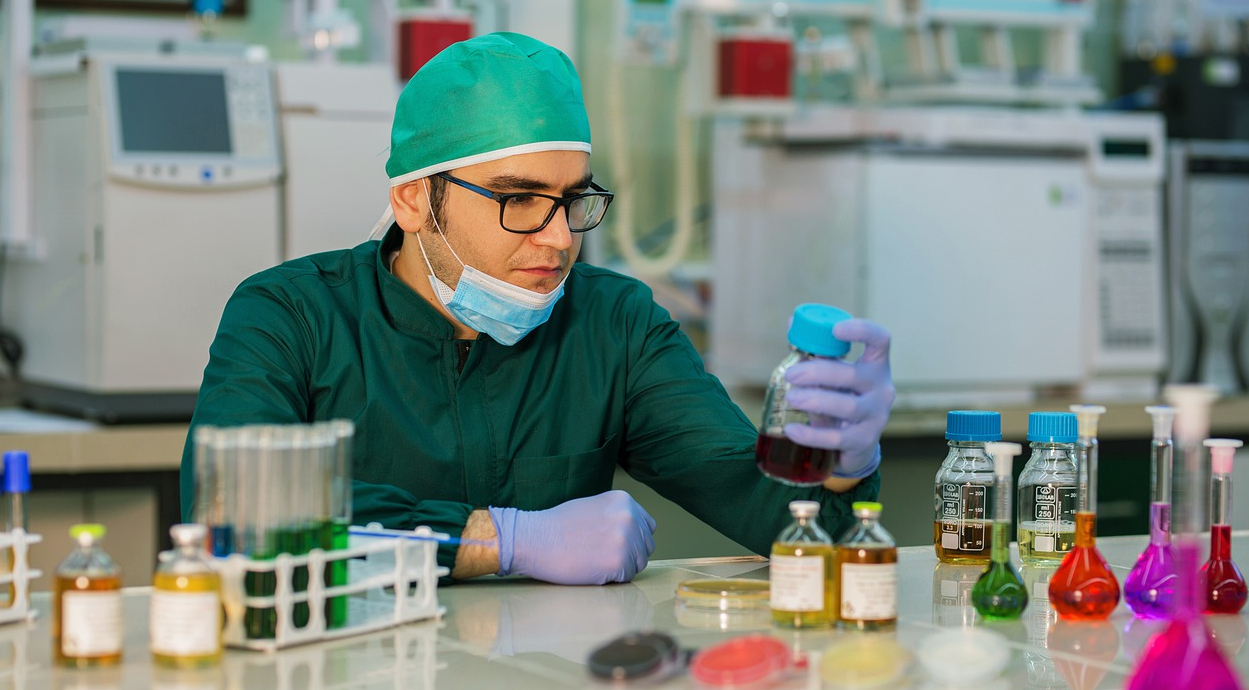Here at Evolve, we love sharing practical ideas that really work, and none more so than the 5S approach to creating and maintaining efficient work spaces.
Originating from the Henry Ford factory in Michigan in the 1930s and taken to the next level by Toyota after the Second World War, 5S is now an essential way of working for thousands of businesses around the world, including science-led firms.
What is 5S?
The 5S method offers five smart steps for organising your work spaces so you can work efficiently, effectively, and safely. This system takes its name from five Japanese words that start with S.
The approach is all about cutting clutter by keeping only the things you need close at hand, putting everything in its proper place, and keeping your work area clean. This will make it easier for you to do your work quickly, easily and safely.
The 5S system can be a valuable tool for any setting, but brings obvious advantages to scientific and manufacturing environments in particular.
Initially coined by the Japanese car giant Toyota, the 5S principles are:
- ‘Seiri’ = Sort
- ‘Seiton’ = Set in order
- ‘Seiso’ = Shine
- ‘Seiketsu’ = Standardise
- ‘Shitsuke’ = Sustain

The five steps in 5S are as follows:
Seiri – Sort
This is all about getting rid of stuff you don’t need around you in the lab, and moving the things you do need into close proximity. It’s also about getting rid of broken things and either fixing them or replacing them with fully functional versions. Some people use the ‘red tag’ process of tagging things with a red tag, and removing the tag when you use something. After a set period, anything that still has a red tag needs to be moved to storage further away. You can, of course, repeat this for tiers of storage.
Seiton – Set in order
With the things you need most often closest at hand, do you know exactly where they are? If everything has a correct home, and is always replaced there, then you’ll find it quickly. The archetype of Seiton is the ubiquitous workshop ‘shadow board’ where each tool has a place and its shadow is painted behind, so missing objects are easy to spot. Another part of this approach is the ergonomic considerations that place objects at heights and in storage that make them easy to remove and handle. Doing this will prevent loss of down time and will make it easy to find and identify the necessary equipment and supplies in your lab.
Seiso – Shine
A clean home is a happy home, and so it is with your workplace. Get rid of rubbish, clean and tidy behind you at the end of a working day or project. The default state should be clear work surfaces that make clutter and dirt easy to spot and sweep up. And that also means good lighting. Within the lab environment you can also use this step as a means of inspection. And this isn’t limited to the surface of your benchtops, it also should apply to equipment, test tubes and so on.
Seiketsu – Standardise
If two lab technicians are doing the same job, then they will need the same equipment. If it’s laid out the same way, they can swap workstations with no loss of efficiency. This is the opposite of personalisation, so apply it to the extent that is right for the culture you want to create. Make 5S activities routine so that abnormal conditions show up. Determine the important points to manage and where to check. It’s also a good idea to use visual management tools such as colour coding, markings showing direction or position, labels, equipment markings, maps and charts.
Shitsuke – Sustain
Here’s where it gets tough. A new project can set up the first 4S. But sustaining it needs discipline. Create rules, standards, and processes that embed the habits you want to see. And make sure people know the reason for them. Better still, get your team to craft their own rules. In a scientific or medical setting, there should ideally be a member of the team whose sole role it is to ensure the whole 5S process is continuously being actioned. By sticking to the 5S process, you encourage your team to not only work efficiently, but also take pride in their work environment.

The 6th S
Some modern 5S setups have introduced a 6th S that stands for safety. Neglecting safety in the medical sector or science industry can cause loss of life, injury, harm to the environment, and loss of reputation of the company.
As such, repercussions arising from inadequate safety measures can cost companies and institutions millions of euros in recompense and work stoppages.
It is vital that due diligence be paid to safety to maintain and improve the efficiency of an organisation, especially in companies where scientists, technicians and others are exposed to danger.
This could mean training your staff on the proper use of PPE, fire hazards and fire extinguishing techniques, visual safety notices, proper use of equipment in the lab, good labelling, and so on.
Embrace the benefits
Applying the Toyota 5S system to your next science project will certainly help to create a smooth, efficient, and well-organised work process, curtailing the wastage of effort, time, and money.
It can improve the efficiency of a company anywhere between 10 and 30% and can cause remarkable changes in the way an organisation is run, even for those that thought there was no scope of improvement
The benefits include a safer work environment, higher productivity, happier staff, and fewer errors throughout the procedures. Consider how to apply this tried and tested mechanism to your scientific work space to help stay organised.
You might also be interested in
All the latest Evolve news and insights all in one place to help you make more informed decisions
Now more than ever we’re by your side
Whether you’re planning to build a new laboratory and need design advice, opening a new science-based business, changing direction, or dealing with the unexpected, we can provide the support and expert guidance to face your next steps with confidence.
For decades, Evolve is proud to have served scientists, technicians researchers, medical professionals and businesses in the healthcare and science industries.
If you need to speak with someone from Evolve, visit our Support Centre page.


